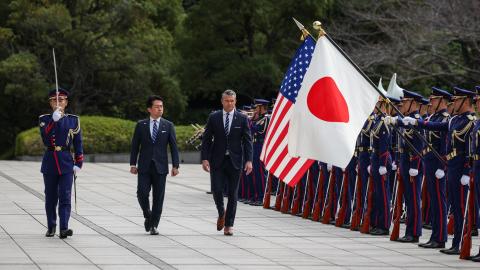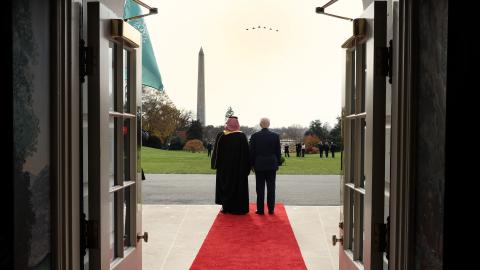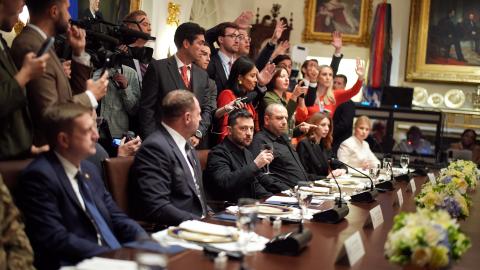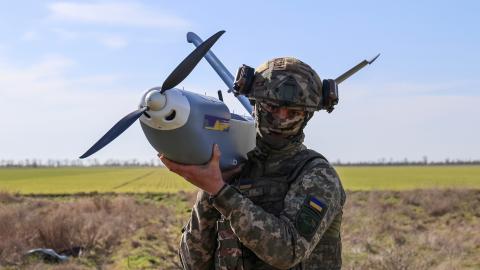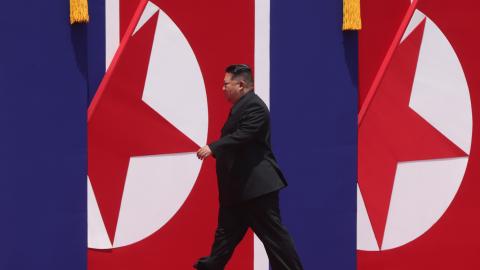Diplomatic outreach to Kim Jong Un is poised to expand in the year ahead, with prospects rising for renewed leader-to-leader engagement. President Trump has repeatedly touted how he gets along “very well” with the North Korean Leader, and President Lee Jae-myung made clear in his inaugural remarks that improving inter-Korean relations would be a priority for his administration. Yet while diplomacy with Pyongyang is both necessary and increasingly likely, meaningful progress may remain elusive due to a familiar set of entrenched obstacles and the emergence of new ones.
Diplomacy remains an indispensable instrument of national security. We are on the brink of a new nuclear age. With North Korea accelerating its production of nuclear weapons and the delivery systems capable of targeting the US homeland and the broader Asia-Pacific region, Washington and Seoul would be remiss not to test whether talks might yield greater stability and reduce risk, even if denuclearization or lasting peace remain distant goals.
As suggested by the US intelligence community’s annual threat assessment, North Korea is stoutly committed to its nuclear deterrent. That conviction has only hardened in the wake of US and Israeli airstrikes aimed at crippling Iran’s nuclear capabilities: nuclear weapons were deemed essential for survival long before, but now Kim may be spurred to grander ambitions. He may not unreasonably conclude the buildup cannot afford to slow down or be derailed by arms control.
North Korea’s nuclear arsenal is now sizable and growing: Pyongyang is believed to possess about 50 nuclear warheads, with enough fissile material for perhaps another 40 bombs. Among recent revelations are Kim’s open disclosure of the previously covert enrichment facility at Kangsong, a possible new HEU plant at the Yongbyon nuclear site. He also appears on the cusp of other achievements, possibly the deployment of a tactical nuclear weapon, new military satellite launches, another nuclear test, and the gradual progress of a sea-based nuclear deterrent, among other steps. Allowing Pyongyang to develop a robust second-strike capability and a credible threat to the US mainland could deepen fears of decoupling, undermining the credibility of extended deterrence and emboldening the Kim regime to escalate provocations.
Diplomacy, even if limited in scope, could at least reduce Pyongyang’s perception of being surrounded by hostile powers contemplating a decapitation strike or preventive attack. Such a scenario may seem improbable—but it is hardly unthinkable for Kim Jong Un.
As the 2023 National Intelligence Estimate noted, North Korea continues to see its nuclear arsenal as leverage to coerce South Korea into easing its stance on US strategic asset deployments, scaling back major military exercises, and rolling back sanctions that have driven the regime’s increasing dependence on China, cybercrime, and an expanding defense relationship with Russia.
At present, the complete absence of dialogue and the collapse of confidence-building mechanisms once supported by the Trump administration and Moon Jae-in government have left the peninsula vulnerable. The rebuilding of military fortifications within the Demilitarized Zone (DMZ) provide tangible evidence of the tenuousness of previous efforts to reduce tensions.
While a sudden military escalation remains unlikely in isolation, the risk of regional conflict cannot be discounted in a world beset by simultaneous crises. A Taiwan contingency, tensions in the South China Sea, renewed confrontation with Russia, or another Iran crisis could overwhelm a US-led order already shifting under the pressures of an “America First” foreign policy.
High-Level Reengagement: Probable and Politically Useful
Channels of communication are already active. President Trump welcomes a new summit, even amid other pressing priorities. Kim, though more cautious after the failed Hanoi meeting, has not ruled out further leader-level diplomacy—especially if it promises face-saving optics without the pressure of immediate concessions. The February 2019 Hanoi summit failed because the two sides could not close the gap between Kim’s desire to retain his nuclear enrichment programs in exchange for significant sanctions relief, and Trump could not be persuaded to give away the leverage of sanctions without at least capping or reducing the North’s nuclear weapons programs.
A summit in the spirit of Singapore could serve a useful function. While the 2018 summit succeeded mainly in breaking the diplomatic ice, the resulting joint statement included a broad four-part framework remains a useful foundation. Unlike during the Moon era when Seoul pursued reconciliation and Washington insisted on denuclearization, the two governments might now entertain a more pragmatic division of labor.
Trump’s desire to reduce US commitments and shift burdens to wealthy allies could dovetail with President Lee Jae-myung’s interest in inter-Korean stability. A tradeoff involving “strategic flexibility” of US forces in exchange for more proactive South Korean engagement with the North may require little more than a handshake and a photo op. A fourth Trump-Kim meeting could easily be framed as a low-risk, high-visibility diplomatic achievement.
Still, longstanding and new challenges remain formidable.
Old Impediment: Denuclearization vs. Ending the War
The core tension between US denuclearization demands and North Korea’s insistence on an end-of-war declaration remains unresolved. Insisting on the improbable goal of the complete, verifiable, and irreversible dismantlement of Pyongyng’s nuclear weapons is at best seen as a long-term aspirational goal.
Would the West be willing to settle for political normalization without a nuclear agreement? Could an end-of-war declaration be seen in Pyongyang as a first step toward pressuring South Korea to bear the full burden of the North Korean threat—despite lacking its own nuclear deterrent?
President Trump may lean toward drawing down US forces in Korea—whether to realign defense posture, respond to Congressional and Pentagon opposition, or due to dissatisfaction with alliance cost-sharing. Either way, strategic and economic issues in the alliance may be separated or linked depending on high-level negotiations. Trade, tariffs, investment, and defense contributions are increasingly interwoven.
New Impediment: Russia-North Korea Military Alignment
One of the most consequential recent developments is the growing defense partnership between Russia and North Korea.
President Putin, determined to outlast Ukraine and outmaneuver NATO, is leaning more heavily on support from North Korea and China. A 2024 comprehensive strategic partnership agreement between Moscow and Pyongyang appears to revive their Cold War alliance, committing both sides to mutual support in a crisis. North Korea’s military troops and munitions have become critical to Russia’s war effort, and Russian defense technology is highly coveted by Mr. Kim. Symbolic gestures such as North Korean media highlighting Kim Jong Un honoring flag-draped coffinsof fallen North Korean soldiers who died fighting Russia’s war, underline this tightening bond.
This partnership complicates diplomacy. Pyongyang may now feel emboldened by the backing of a nuclear-armed, veto-wielding member of the UN Security Council, and believe that Washington’s ability to diplomatically isolate North Korea is diminishing.
Beyond the bilateral relationship, the deepening alignment among the CRINK countries (China, Russia, Iran, and North Korea) is forging stronger links between potential flashpoints in Europe, the Middle East, and East Asia. Against this backdrop, Kim Jong Un may choose to feign disinterest in diplomacy with his principal adversaries.
Toward a Flexible and Enduring Alliance
Recent assessments of possible high-level diplomatic reengagement with North Korea raise as many questions as answers. Even in the absence of a breakthrough, diplomacy can ease tensions, lower risks, and reinforce the US-ROK alliance. These benefits, however, depend on both Washington and Seoul adopting a more flexible, holistic, and strategic approach.
Can a framework be forged that trades strategic flexibility for strategic reassurance? Can the alliance remain resilient amid the accelerating transition of wartime operational control (OPCON), a smaller US troop presence, and increasing emphasis on China? Can trust be rebuilt with North Korea without undermining trust with South Korea?
These remain open questions. The best-case outcome might see South Korea assume greater responsibility for stability on the peninsula, while the United States focuses on deterring China. President Lee’s unilateral decision to stop the “audio aggression” of loudspeaker broadcasts at the DMZ was met with a reciprocal move by North Korea, offering a glimmer of hope for improved inter-Korean ties. At the same time, deeper strategic alignment between the United States and South Korea could help recalibrate the alliance. This alignment might include greater economic integration—cooperation in shipbuilding, energy, data centers, semiconductors, biotech, and a defense industrial confederation.
The worst-case scenario is one of alliance drift, North Korean brinkmanship, and the erosion of the global nonproliferation regime. The test of extended deterrence will not only affect stability on the peninsula but could also determine whether the world can uphold any semblance of order or instead slide into a future where nuclear weapons proliferate unchecked in the absence of a credible diplomatic framework.
In short, while diplomacy may not resolve the core conflicts with North Korea or halt Pyongyang’s nuclear development, its absence or failure could make the Korean flashpoint even more dangerous than it already is.
